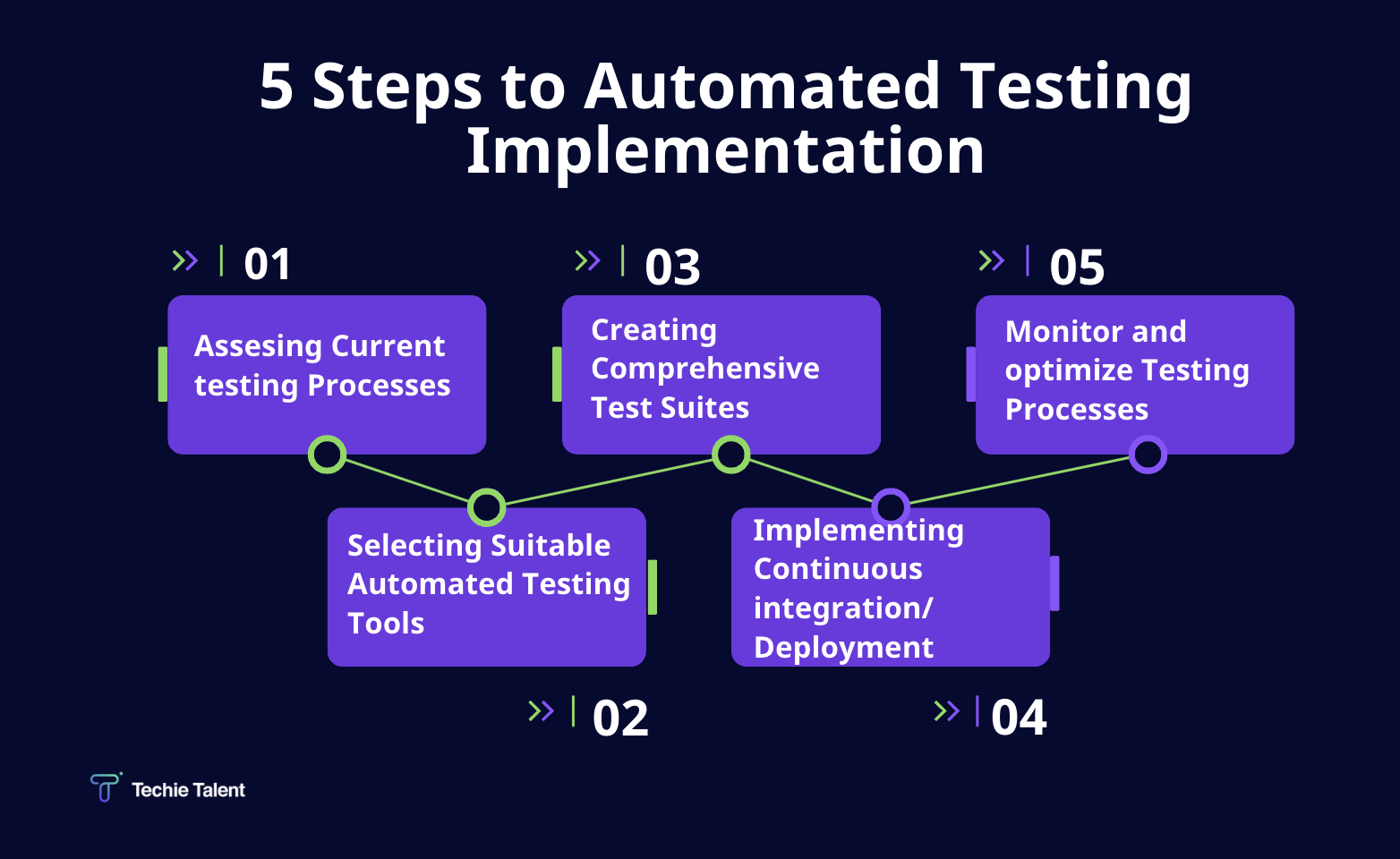Subscribe to Our Insights
Thank you! Your submission has been received!
Oops! Something went wrong while submitting the form.
Our Hubs
Resources
Company
© 2025 Cresteo. All Rights Reserved.
.jpeg)
Traditionally used to ensure quality, manual testing is often prone to limitations. Truth is, it’s time-consuming, labor-intensive, and susceptible to human error. As software applications grow in size and complexity, manual testing struggles to scale, leaving teams overwhelmed and unable to meet release deadlines. The inefficiencies associated with manual testing create different bottlenecks and multitasking issues, hindering a company’s ability to deliver robust software at the speed required in today’s competitive markets.
This is where automated testing comes into play. By automating repetitive and complex test cases, software test automation allows businesses to streamline the quality assurance process. It significantly reduces testing time, enhances accuracy by minimizing human errors, and provides scalable solutions that can easily adapt to growing project demands. Automated testing has proven to be a game-changer in modern software development, empowering organizations to deliver high-quality software faster and more efficiently than ever before. That’s why we’re dedicating this article to providing you with our best practices for easy implementation of this testing strategy. Keep reading to learn more!
In the context of quality assurance (QA), automated testing plays a crucial role in improving the efficiency, speed, and reliability of testing efforts. By leveraging automation tools, development teams can ensure that software products meet the desired quality standards while reducing the manual effort required to verify performance. This enables businesses to release updates and new features more quickly, with greater confidence in their quality.
Unit tests focus on testing individual components or modules of the software in isolation. This typically involves testing functions or methods to ensure they produce the expected output when given specific inputs.
Purpose: Ensures that each module functions correctly on its own before integrating with other components.
Tools: JUnit (for Java), NUnit (for .NET), and PyTest (for Python).
Integration testing evaluates how different modules or components of the software interact with each other. It ensures that the interfaces between units work as intended and that integrated components function correctly as a group.
Purpose: Identifies issues that arise when combining individual units, such as data flow errors or interface mismatches.
Tools: Postman (for APIs), SoapUI, and JUnit for combined unit and integration testing.
Functional testing verifies that the software performs according to the defined requirements and specifications. It focuses on checking if specific functionality, such as user login or data processing, works as expected.
Purpose: Ensures that the application meets the functional requirements and delivers the intended user experience.
Tools: Selenium, UFT (Unified Functional Testing), and TestComplete.
Regression testing ensures that recent changes to the software, such as bug fixes or new features, have not adversely affected existing functionality. It involves re-running previous test cases to validate that the software still works as expected.
Purpose: Prevents the introduction of new bugs in existing code when updates are made.
Tools: Selenium, Jenkins (for continuous integration), and Katalon Studio.

Implementing test automation successfully requires careful planning, prioritization, and continuous improvement. By following a set of best practices, organizations can maximize the efficiency and effectiveness of their test automation processes, ensuring long-term success.
Before diving into automation, it’s essential to have a well-defined strategy that outlines the objectives of automation testing. This includes understanding the scope of automation, such as which types of tests will be automated (e.g., unit, integration, or regression tests), and what the desired outcomes are (e.g., reducing release cycles or improving code coverage).
Identify key metrics: Decide on measurable success indicators, such as pass/fail rates, test coverage, and time saved, to track progress over time.
Set clear timelines: Establish a roadmap for implementation, from the initial setup to scaling automation across various stages of development.
Companies using Selenium report saving over 60% of the time spent on regression tests by automating repetitive workflows.
According to the World Quality Report 2023, 81% of organizations saw improvements in release speed and software quality by implementing test automation as part of CI/CD practices.
Tip: Utilize version control systems for test scripts to track changes and maintain historical records.
By adhering to these best practices, you can can maximize the return on investment in test automation, achieving faster, more reliable, and higher-quality software releases.
At Techie Talent, we specialize in implementing robust software test automation solutions tailored to your specific needs. Our team of experts will guide you through creating a customized test strategy that integrates seamlessly with your development process, ensuring faster releases and higher-quality software. Contact us today to revolutionize your quality assurance efforts and stay ahead in today’s competitive digital landscape!